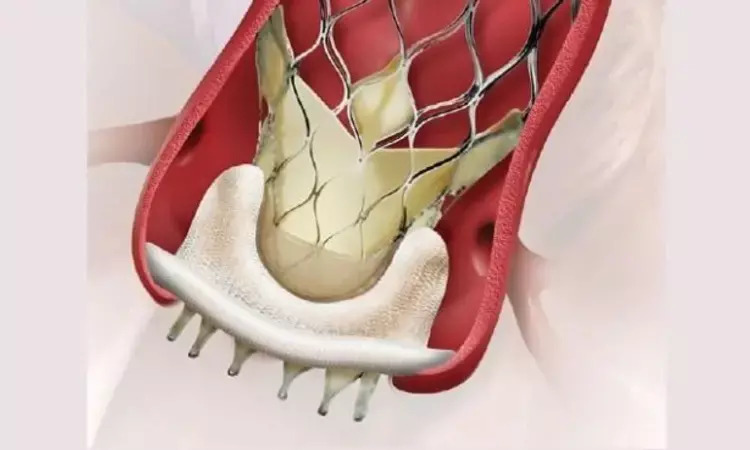- Home
- Medical news & Guidelines
- Anesthesiology
- Cardiology and CTVS
- Critical Care
- Dentistry
- Dermatology
- Diabetes and Endocrinology
- ENT
- Gastroenterology
- Medicine
- Nephrology
- Neurology
- Obstretics-Gynaecology
- Oncology
- Ophthalmology
- Orthopaedics
- Pediatrics-Neonatology
- Psychiatry
- Pulmonology
- Radiology
- Surgery
- Urology
- Laboratory Medicine
- Diet
- Nursing
- Paramedical
- Physiotherapy
- Health news
- Fact Check
- Bone Health Fact Check
- Brain Health Fact Check
- Cancer Related Fact Check
- Child Care Fact Check
- Dental and oral health fact check
- Diabetes and metabolic health fact check
- Diet and Nutrition Fact Check
- Eye and ENT Care Fact Check
- Fitness fact check
- Gut health fact check
- Heart health fact check
- Kidney health fact check
- Medical education fact check
- Men's health fact check
- Respiratory fact check
- Skin and hair care fact check
- Vaccine and Immunization fact check
- Women's health fact check
- AYUSH
- State News
- Andaman and Nicobar Islands
- Andhra Pradesh
- Arunachal Pradesh
- Assam
- Bihar
- Chandigarh
- Chattisgarh
- Dadra and Nagar Haveli
- Daman and Diu
- Delhi
- Goa
- Gujarat
- Haryana
- Himachal Pradesh
- Jammu & Kashmir
- Jharkhand
- Karnataka
- Kerala
- Ladakh
- Lakshadweep
- Madhya Pradesh
- Maharashtra
- Manipur
- Meghalaya
- Mizoram
- Nagaland
- Odisha
- Puducherry
- Punjab
- Rajasthan
- Sikkim
- Tamil Nadu
- Telangana
- Tripura
- Uttar Pradesh
- Uttrakhand
- West Bengal
- Medical Education
- Industry
Neo2 and Ultra transcatheter heart valves both yield excellent outcomes after TAVI

Germany: TAVI using the latest generation self-expanding ACURATE neo2 (Neo2) and the balloon-expandable SAPIEN 3 Ultra (Ultra) valves led to comparable short-term outcomes, which were excellent, says a recent study in EuroIntervention. However, transvalvular gradients were found to be lower with the Neo2 resulting in higher device success rates.
Considering the non-existence of data on the Neo2 and Ultra transcatheter heart valves (THV), Costanza Pellegrini and the research team from Germany aimed to compare the outcomes after transcatheter aortic valve implantation (TAVI) using the Neo2 and the Ultra THV.
The study included 1,356 patients at four centers who were treated with either the Ultra (n=748) or the Neo2 (n=608). The researchers assessed the association of the THV and the primary endpoint using inverse probability treatment weighting (IPTW) and 1:1 propensity score matching (PSM), which resulted in the identification of the 472 matched pairs. According to the latest Valve Academic Research Consortium definitions, device success was the study's primary endpoint.
The study led to the following findings:
- After PSM, there were no relevant differences between the groups.
- While rates of moderate to severe paravalvular leakage (PVL) were overall low (0.6% vs. 1.1%), elevated transvalvular gradients (≥20 mmHg) were less frequent with the Neo2 (2.4% vs. 7.7%), which translated into a significantly higher rate of device success with the Neo2 compared with the Ultra (91.9% vs. 85.0%).
- Consistently, the Neo2 was associated with higher device success rates in the IPTW analysis (odds ratio [OR] 1.961).
- Rates of mild PVL were significantly lower with the Ultra compared with the Neo2 (20.0% vs. 32.8%).
- Clinical events at 30 days were comparable between the two groups.
"Findings showed excellent and overall comparable short-term outcomes after TAVI using the Neo2 or Ultra THV," the researchers wrote in their conclusion. "However, transvalvular gradients were lower with the Neo2, which translated into higher device success rates. Mild paravalvular leakage rates were remarkably lower with the Ultra THV."
What is TAVI?
The surgery may be called transcatheter aortic valve implantation (TAVI) or transcatheter aortic valve replacement (TAVR). It is a minimally invasive method of inserting a new valve without removing the old, damaged valve. The new valve is placed inside the diseased valve.
The TAVI is similar to stent placement in an artery; it delivers a fully collapsible replacement valve to the valve site through a catheter. Once the new valves expand, it pushes the old valve leaflets out of the way, and tissue in the replacement valves functions to regulate the blood flow.
Reference:
The study, "ACURATE neo2 versus SAPIEN 3 Ultra for transcatheter aortic valve implantation," was published in the EuroIntervention journal.
DOI: 10.4244/EIJ-D-22-00164
Dr Kamal Kant Kohli-MBBS, DTCD- a chest specialist with more than 30 years of practice and a flair for writing clinical articles, Dr Kamal Kant Kohli joined Medical Dialogues as a Chief Editor of Medical News. Besides writing articles, as an editor, he proofreads and verifies all the medical content published on Medical Dialogues including those coming from journals, studies,medical conferences,guidelines etc. Email: drkohli@medicaldialogues.in. Contact no. 011-43720751


